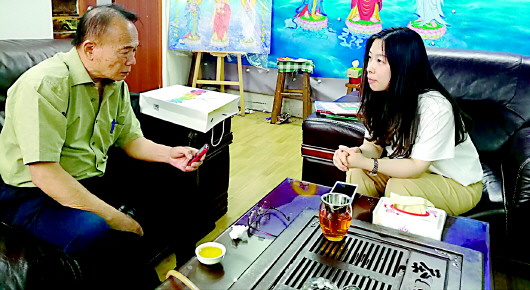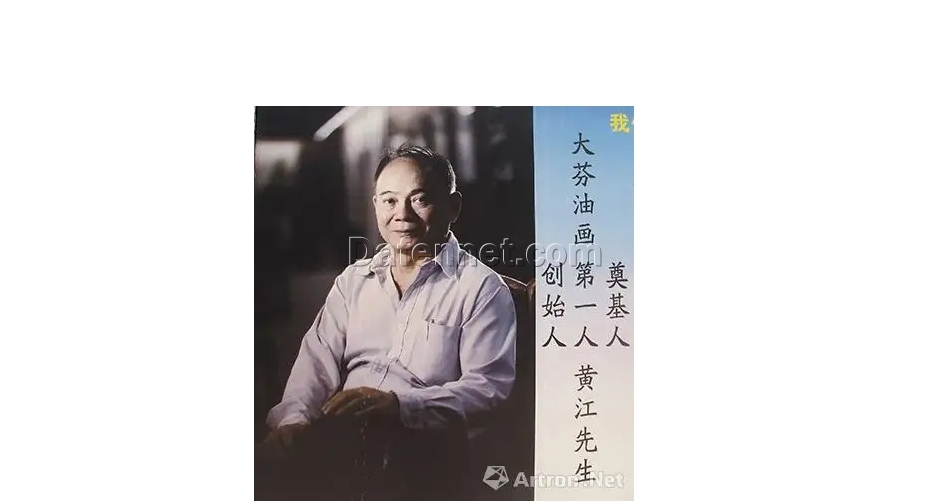Dafen oil painting Village
Huang Jiang: The Founding Father of Dafen Oil Painting Village

Huang Jiang, originally from Guangdong’s Sihui but raised in Guangzhou, is widely recognized as the pioneer of Dafen Oil Painting Village. In 1989, he established the first oil painting workshop in Dafen, a then-obscure village in Longgang’s Buji district. Over time, he attracted numerous artists and enthusiasts, laying the foundation for what would become China’s most famous oil painting hub.
Love at First Sight: A Quiet Haven for Art
When Huang first arrived, Dafen was a remote, impoverished settlement—just 0.4 square kilometers of dirt roads, reed marshes, and simple homes. Yet, he saw potential. Compared to Hong Kong and Guangzhou, where he had previously worked in the “commodity painting” trade (replicating and adapting famous artworks for mass production), Dafen offered lower costs and a peaceful environment. In 1989, he rented a 250-square-meter house for just 1,600 yuan and moved in with 20 apprentices.
The Rise of “Commodity Paintings”
Huang’s business took off after securing a deal with Walmart in 1986. By 1992, a massive French order—360,000 paintings in just six weeks—forced him to innovate. He developed an assembly-line approach, where each artist specialized in a single element (e.g., skies, mountains), drastically improving efficiency. This method became standard in Dafen, fueling its growth into a global oil painting hub, eventually supplying 70% of Europe and America’s market.
The Turning Point: Shenzhen’s First Cultural Expo
In 2004, Dafen was chosen as the sole sub-venue for Shenzhen’s inaugural International Cultural Industries Fair (ICIF). The government invested heavily in transforming the village—building art plazas, galleries, and European-style streetscapes. The event earned Dafen the title of “National Cultural Industry Demonstration Base,” marking a new era for Longgang’s cultural sector. Sales skyrocketed from 80 million yuan in 2003 to 1.4 billion yuan post-ICIF.
Challenges and Evolution
The 2008 financial crisis hit Dafen hard, with many artists leaving. Huang shifted focus to domestic markets, opening galleries in cities like Beijing and Yiwu. Meanwhile, Dafen began embracing original art alongside replicas, fostering a “culture + technology + finance + tourism” model. Today, the village continues to innovate, aiming to become an international art community.
Unforgettable Moments
Huang vividly recalls the 2004 ICIF’s grand opening, where 1,000 painters created simultaneously in Dafen’s streets. Assigned the number “1000,” he painted Dafen Autumn, capturing the village’s vibrant spirit. Media attention surged, with Huang frequently interviewed by local and international press.
Looking Ahead
Reflecting on Dafen’s journey—from a backwater to a cultural landmark—Huang emphasizes perseverance. Now, he plans to unite local artists and establish a company for a potential IPO, ensuring Dafen’s legacy endures.
Q&A Highlights
- On Longgang’s transformation: “The biggest change was infrastructure. In the 1990s, roads were rough and narrow. Today, connectivity drives growth.”
- On Dafen’s impact: “We proved that art can uplift a community. Dafen’s success inspired Longgang’s entire cultural sector.”
- On his proudest decision: “Staying through hard times. Dafen is my second home.”
Huang Jiang’s story is one of vision, resilience, and serendipity—a testament to how one man’s dream can redefine a village’s destiny.

